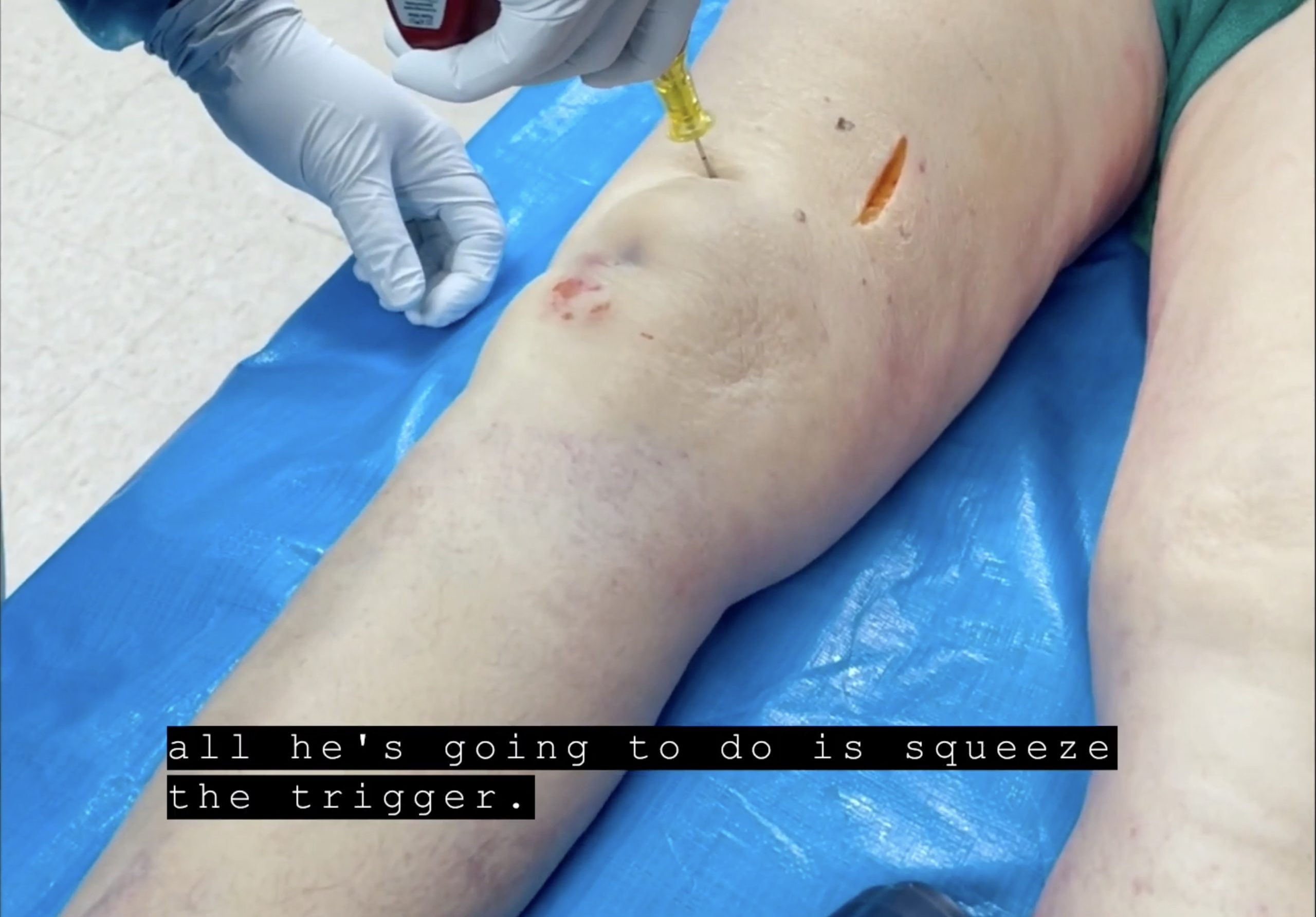
Diversifying your options: Distal femur IO access
- Posted by Mike Shertz MD/18D
- Categories (C) Circulation
🕖 Reading Time, 3 minutes
Typically, intra-osseous access is performed either in the proximal humerus or proximal tibia in the civilian setting and sternally in the military.
A recent study of 2016 US prehospital IO placements in adult out-of-hospital cardiac arrests included 888 IOs in the distal femur, 594 humerus, and 534 tibial. In this community, IO placement is allowed at the BLS (Basic Life Support) level and nearly half of those placements were by BLS personnel. Site selection was up to the provider.1
Distal femur placement, often utilized in children, was performed 2 cm proximal to the proximal patella, in the midline. If there was a significant amount of overlying soft tissue, paramedics were allowed to make a vertical “cut down” incision to help reach bone.
Both proximal humeral and distal femur had similar first attempt success at 95% each. Proximal tibial placement was lower at 87%. Dislodgement favored the distal femur at only 10%. Humeral and tibial were similar at 16% and 15%, respectively. Flow rates were felt to be similar between the distal femur and proximal humerus. All IV fluids administered were with a pressure bag.
Previous studies have shown distal femur flow rates between that of the proximal humerus and proximal tibia.2
Over the past several years proximal humeral IO access has been favored secondary to shorter time for drug delivery into the central circulation, faster fluid flow rates, and perceived ease of insertion secondary to non-weight-bearing bone. The downside is higher dislodgement in this mobile, softer bone, and location near the head in cardiac arrest or during airway management which can be a crowded location. Proximal tibial insertion offers geographical separation of the IO site from the upper body activity during cardiac arrest, slower drug delivery, and much lower fluid flow rates.
This study shows the viability of adult distal femur IO placement which offers intermediate fluid flow rates, some geographic separation, and possibly the lowest likelihood of dislodgement secondary to placement in a very dense weight-bearing bone.
Notes:
1 Rayas EG, Winckler C, Bolleter S, Stringfellow M, Miramontes D, Shumaker J, Lewis A, Wampler D. Distal femur versus humeral or tibial IO, access in adult out of hospital cardiac resuscitation. Resuscitation. 2022 Jan;170:11-16.
2Lairet J, Bebarta V, Lairet K, Kacprowicz R, Lawler C, Pitotti R, Bush A, King J. A comparison of proximal tibia, distal femur, and proximal humerus infusion rates using the EZ-IO intraosseous device on the adult swine (Sus scrofa) model. Prehosp Emerg Care. 2013 Apr-Jun;17(2):280-4. Warren DW, Kissoon N, Sommerauer JF, Rieder MJ. Comparison of fluid infusion rates among peripheral intravenous and humerus, femur, malleolus, and tibial intraosseous sites in normovolemic and hypovolemic piglets. Ann Emerg Med. 1993 Feb;22(2):183-6.
Video from Scotty Bolleter and David Miramontes, MD.
Dr. Mike Shertz is the Owner and Lead Instructor at Crisis Medicine. Dr. Shertz is a dual-boarded Emergency Medicine and EMS physician, having spent over 30 years gaining the experience and insight to create and provide his comprehensive, science-informed, training to better prepare everyday citizens, law enforcement, EMS, and the military to manage casualties and wounded in high-risk environments. Drawing on his prior experience as an Army Special Forces medic (18D), two decades as an armed, embedded tactical medic on a regional SWAT team, and as a Fire Service and EMS medical director.
Using a combination of current and historical events, Dr. Shertz’s lectures include relevant, illustrative photos, as well as hands-on demonstrations to demystify the how, why, when to use each emergency medical procedure you need to become a Force Multiplier for Good.



